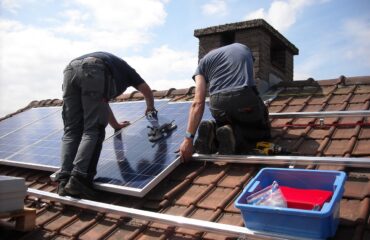Are you curious about the inner workings of a roof? Get ready to delve into the fascinating world of roofing as our knowledgeable roofers help you explore the anatomy of a roof.
This informative article will guide you through the different roofing materials, the structure that holds it all together, and the various components that make up a roof.
Whether you’re a homeowner or a DIY enthusiast, understanding the anatomy of a roof is essential knowledge.
So, let’s get started and uncover the secrets of a well-built roof.
Roofing Materials
When selecting roofing materials for your home, take into account aspects like longevity, affordability, and visual attractiveness. Regarding roofing styles, various options are available, each with its own benefits.
Due to their cost-effectiveness and adaptability, asphalt shingles stand out as the preferred option for many homeowners. Installation is straightforward, and these roofing materials demand minimal upkeep.
Metal roofing is another durable option known for its longevity and resistance to extreme weather conditions.
Tile roofing is aesthetically appealing and can enhance the overall look of your home.
However, it is essential to note that different roofing materials require different maintenance levels.
To safeguard the durability of your roof and prevent possible leaks or damage, it is essential to conduct regular inspections and promptly address any necessary repairs.
Roof Structure
When considering the anatomy of a roof, it is vital to understand the structure that supports and protects your home. The roof structure consists of two main elements: the roof pitch and the roof trusses.
The roof pitch refers to the steepness or slope of the roof. It is typically measured in terms of the rise over the run, indicating how much the roof rises vertically for every horizontal foot. The pitch is pivotal in shaping the entire roofing structure’s visual appeal and functionality.
On the other hand, roof trusses are the framework that supports the roof. They are pre-engineered wooden structures made up of triangular shapes that distribute the roof’s weight evenly and provide structural stability. Roof trusses are designed to withstand various loads, such as the roof’s weight, snow, and wind.
Understanding the roof pitch and utilizing properly engineered roof trusses are essential for a durable and reliable roof structure.
Roofing Components
Now, let’s delve into the various roofing components that make up the anatomy of a roof. To ensure proper roofing maintenance and adequate roof ventilation, it is important to understand these key components:
1. Roofing Shingles: These are the outermost layer of the roof, protecting weather elements such as rain, snow, and UV rays. Regular inspection and maintenance of shingles can help prolong their lifespan.
2. Roof Underlayment: Positioned directly beneath the shingles, the underlayment acts as an additional layer of protection against water infiltration. It also helps to improve the overall insulation of the roof.
3. Roof Ventilation System: A well-designed ventilation system is crucial for maintaining a healthy roof. It allows for the release of excess heat and moisture, preventing the formation of mold, mildew, and rot. Adequate roof ventilation can also extend the lifespan of the roofing materials.
Understanding these roofing components and ensuring regular maintenance will help keep your roof in optimal condition and protect your home from potential damage.
Roofing Installation
Moving on to the next step in the process, let’s dive into the essential aspect of roofing installation. Roofing installation is a critical phase that ensures the durability and functionality of your roof.
Proper installation is crucial to prevent common roofing problems and maintain the longevity of your roof. During installation, it is crucial to ensure the materials are correctly aligned and secured.
This includes appropriately fastening the shingles or tiles, installing flashing to prevent water leaks, and sealing any gaps or joints.
Additionally, proper ventilation and insulation should be installed to avoid moisture buildup and maintain a comfortable indoor environment.
Regular roofing maintenance is essential to identify and address any potential issues before they become significant problems.
Properly installed roofs will provide years of protection and peace of mind.





